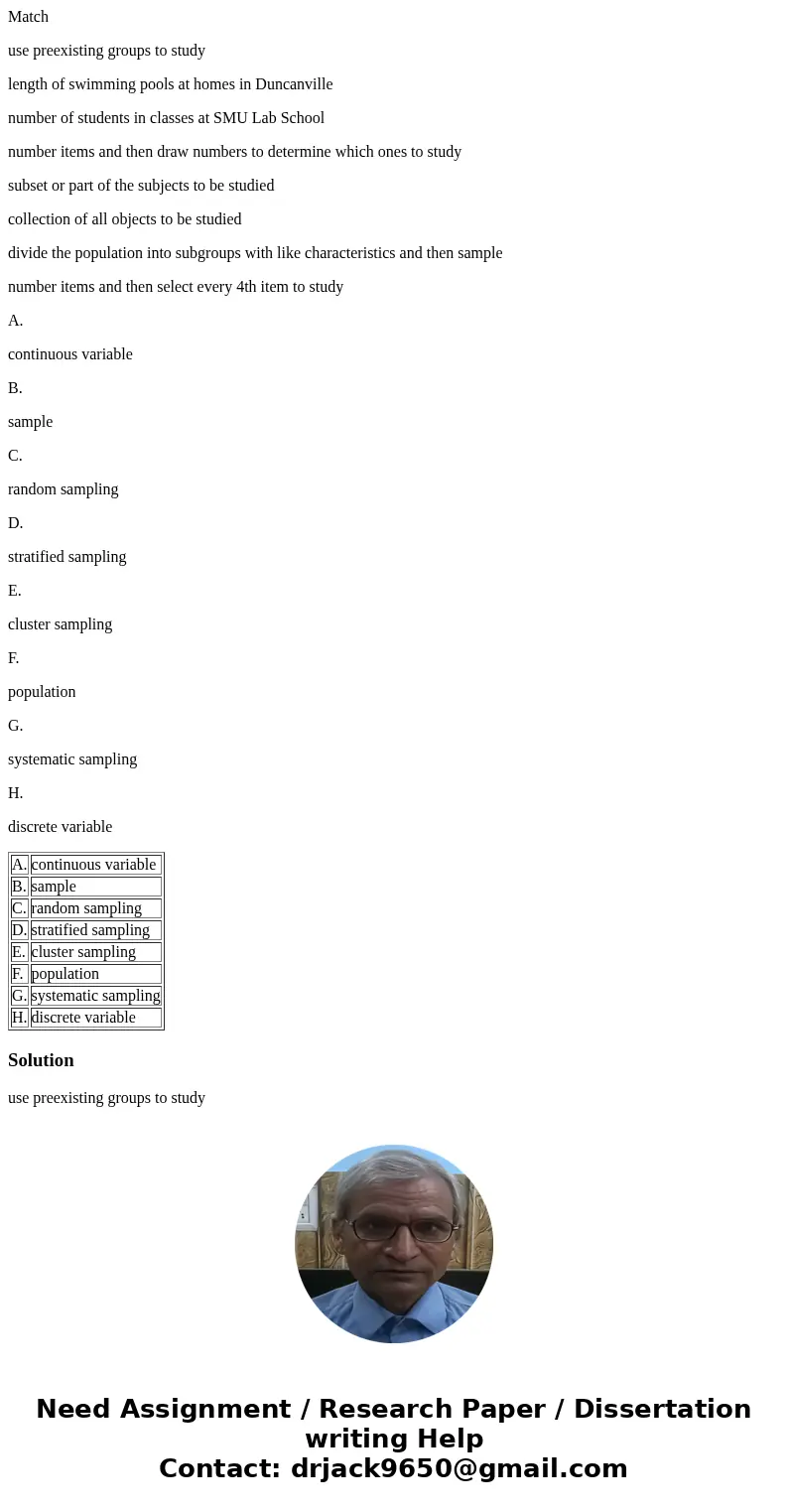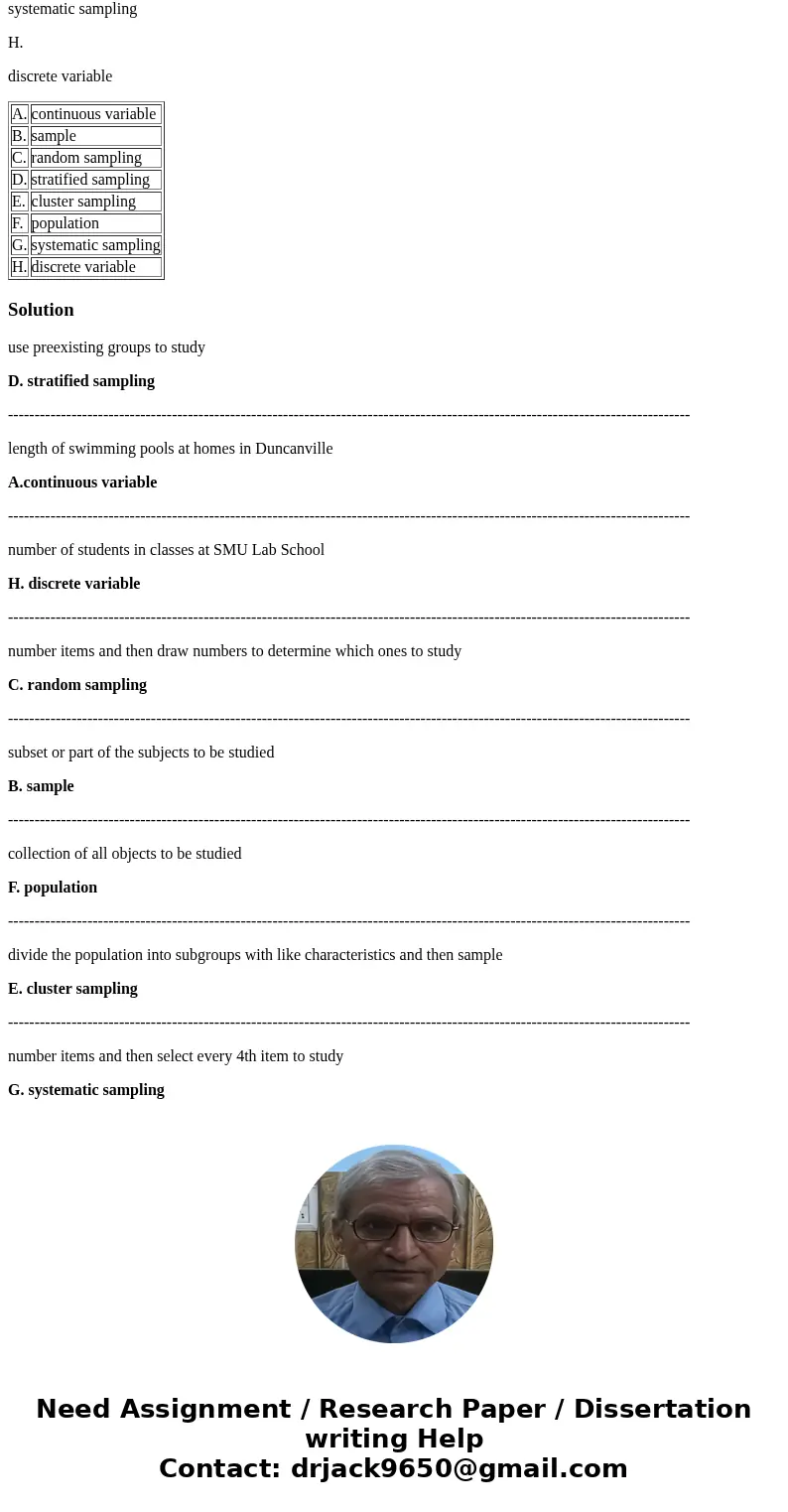Match use preexisting groups to study length of swimming poo
Match
use preexisting groups to study
length of swimming pools at homes in Duncanville
number of students in classes at SMU Lab School
number items and then draw numbers to determine which ones to study
subset or part of the subjects to be studied
collection of all objects to be studied
divide the population into subgroups with like characteristics and then sample
number items and then select every 4th item to study
A.
continuous variable
B.
sample
C.
random sampling
D.
stratified sampling
E.
cluster sampling
F.
population
G.
systematic sampling
H.
discrete variable
| A. | continuous variable |
| B. | sample |
| C. | random sampling |
| D. | stratified sampling |
| E. | cluster sampling |
| F. | population |
| G. | systematic sampling |
| H. | discrete variable |
Solution
use preexisting groups to study
D. stratified sampling
---------------------------------------------------------------------------------------------------------------------------------
length of swimming pools at homes in Duncanville
A.continuous variable
---------------------------------------------------------------------------------------------------------------------------------
number of students in classes at SMU Lab School
H. discrete variable
---------------------------------------------------------------------------------------------------------------------------------
number items and then draw numbers to determine which ones to study
C. random sampling
---------------------------------------------------------------------------------------------------------------------------------
subset or part of the subjects to be studied
B. sample
---------------------------------------------------------------------------------------------------------------------------------
collection of all objects to be studied
F. population
---------------------------------------------------------------------------------------------------------------------------------
divide the population into subgroups with like characteristics and then sample
E. cluster sampling
---------------------------------------------------------------------------------------------------------------------------------
number items and then select every 4th item to study
G. systematic sampling


 Homework Sourse
Homework Sourse